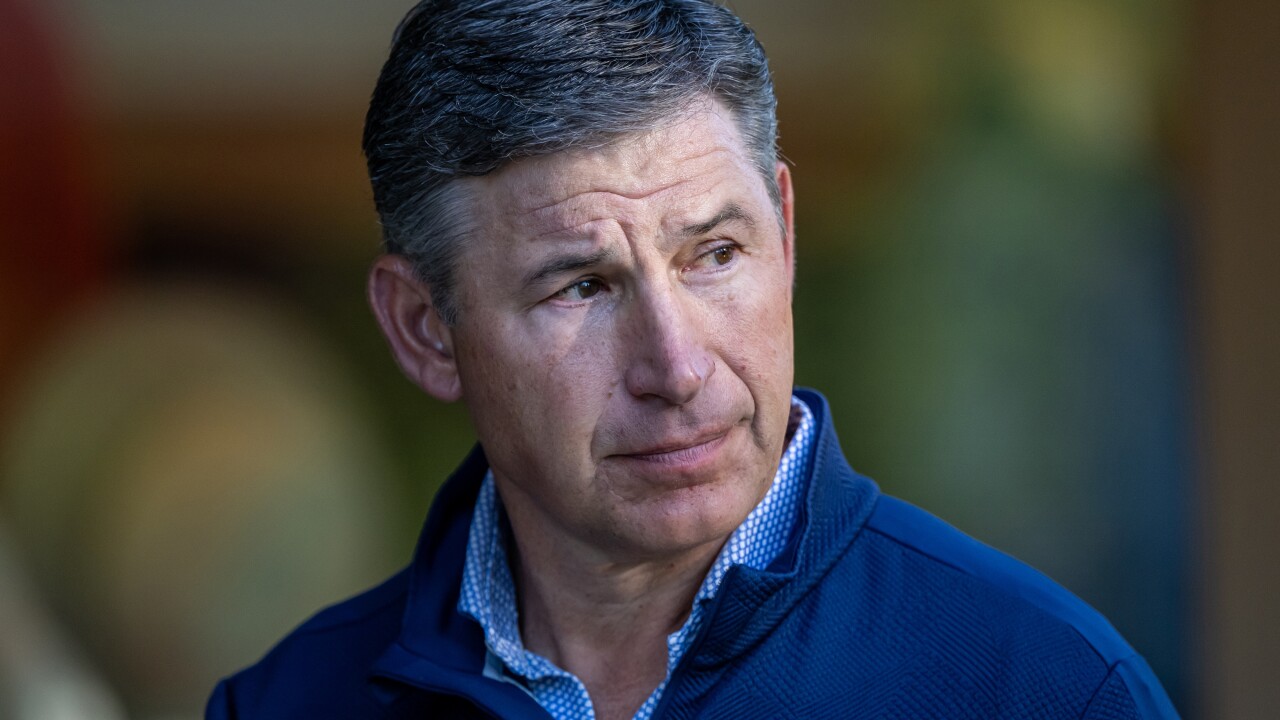U.S. central bankers offered divergent signals over the size of the next interest rate hike, with St. Louis's James Bullard urging another 75-basis-point move while Kansas City's Esther George struck a more cautious tone.
Bullard, who is one of the most hawkish policymakers at the U.S. central bank, told The Wall Street Journal in an interview published Thursday that he favored going big again, arguing "we should continue to move expeditiously to a level of the policy rate that will put significant downward pressure on inflation."

"I don't really see why you want to drag out interest rate increases into next year," he said.
The Fed in July raised the target range for its benchmark rate by three-quarters of a percentage point to 2.25% to 2.5%, following a similar-sized hike in June to cool the hottest inflation in 40 years. Officials have since signaled that either 50, or another 75 basis points, were on the table for their Sept. 20-21 meeting, depending on the data. They get fresh monthly readings on inflation and employment between now and then.
Investors have not been put off by the threat of higher Fed rates. The S&P 500 index of U.S. stocks has risen about 9% since the July gathering.
Both Bullard and George are voters this year on the rate-setting Federal Open Market Committee. But George, who hosts the Fed's annual policy retreat next week in Jackson Hole, Wyoming, has sounded more dovish than Bullard in recent months, after many years of being viewed as a hawk.
She backed the July hike but dissented in June in favor of a smaller half-point increase,
"I think the case for continuing to raise rates remains strong. The question of how fast that has to happen is something my colleagues and I will continue to debate, but I think the direction is pretty clear," she said in Independence, Missouri. "We have done a lot, and I think we have to be very mindful that our policy decisions often operate on a lag. We have to watch carefully how that's coming through."
George also noted that the Fed was shrinking its $8.9 trillion balance sheet while raising rates, which would also help to restrain the economy. The pace of decline steps up next month to an annual pace of around $1 trillion.
Policymakers saw the federal funds rate reaching a range of 3.25% to 3.5% this year, according to the median estimate of their June projections. The forecasts will be updated in September when the Fed next meets.
Earlier on Thursday, San Francisco Fed President Mary Daly told CNN International that she was open to raising rates by 50 or 75 basis points next month and that officials would be in no hurry to reverse course next year. That pushes back against investor bets that the Fed will cut rates before the end of 2023.
In separate remarks, Minneapolis Fed chief Neel Kashkari said that "we have an inflation problem right now," and that the central bank has to get it down "urgently." Neither Daly nor Kashkari vote on Fed policy this year.
The officials spoke a day after the release of minutes from the July Fed policy meeting, which showed officials judged it would eventually be appropriate to slow the pace of interest rate increases, with some advocating the Fed keep them at elevated levels for some time after increases concluded.
Fed officials who have spoken since the July meeting have pushed back against any perception that they'd be pivoting away from tightening anytime soon. They've made it clear that curbing the hottest inflation in four decades is their top priority.
The July jobs data, published by the Labor Department on Aug. 5, showed companies added 528,000 employees to payrolls last month, more than double what forecasters were expecting, and the unemployment rate ticked down to 3.5%, matching the pre-pandemic low.
But the department's Aug. 10 readout on consumer prices showed they rose 8.5% in the 12 months through July, down from the 9.1% increase in the year to June that had marked the highest inflation rate since 1981.
George pushed back against the easing of financial conditions that has come in the wake of the July CPI report as stocks have rallied.
"Maybe that caused people to think, well, maybe the Fed will slow down, maybe that's the beginning of inflation coming down. That is not my sense right now," she said. "So, today, I think those easing of financial conditions are not reflecting, really, how the Federal Reserve is thinking about its policy."




